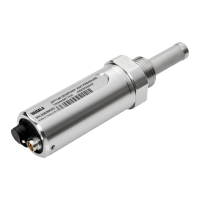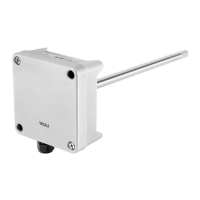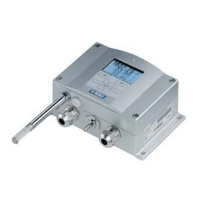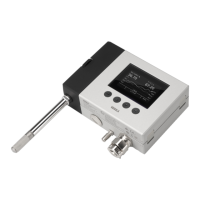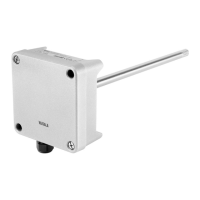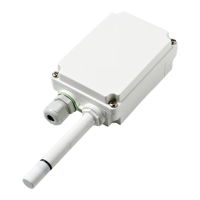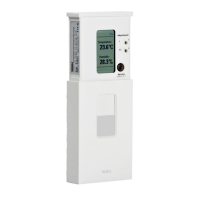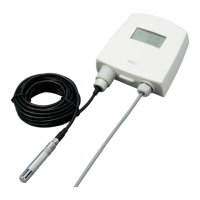The wind direction is not calculated when the wind speed drops below 0.05 m/s. In this
case, the las
t calculated direction output remains until the wind speed increases to the level
of 0.05 m/s.
The average values of wind speed and direction are calculated as a scalar average of all
samples over the selected averaging time (1 ... 3600 s) with a selectable updating interval.
The sample count depends on the selected sampling rate: 4 Hz (default), 2 Hz, or 1 Hz. The
minimum and maximum values of wind speed and direction represent the corresponding
extremes during the selected averaging time.
You can select the computation of the wind speed extreme values in one of two ways:
• Traditional minimum/maximum calculation
• 3-second gust & calm calculation recommended by the World Meteorological
Organization (WMO). In this case the highest and lowest 3-second average values
(updated once a second) replace the maximum and minimum values in reporting of
wind speed, while the wind direction variance is returned in the traditional way.
The transmitter constantly monitors the wind measurement signal quality. If poor quality is
detected, the wind values are marked as invalid. If over half of the measurement values are
considered invalid, the last valid wind values are returned as missing data. However, in the
SDI-12 protocol, the invalid values are marked as zero (0).
More Information
‣
Wind Measurement Averaging Method (page 181)
3.2 Precipitation Measurement Principle
WXT536 WXT535 WXT534 WXT533 WXT532 WXT531
✔ ✔ ✔ ✔
The transmitter uses Vaisala RAINCAP Sensor 2-technology in precipitation measurement.
The pr
ecipitation sensor comprises of a steel cover and a piezoelectrical sensor mounted on
the bottom surface of the cover.
The precipitation sensor detects the impact of individual raindrops. The signals from the
impact are proportional to the volume of the drops. The signal of each drop can be
converted directly to accumulated rainfall. An advanced noise filtering technique filters out
signals origina
ting fr
om other sources than raindrops.
The measured parameters are:
• Accumulated rainfall
• Rain current and peak intensity
• Duration of a rain event
Detecting each drop enables the computing of rain amount and intensity with high
resolution.
WXT530 Series User Guide M211840EN-D
28
sales@streamlinemeasurement.co.uk
www.streamlinemeasurement.co.uk
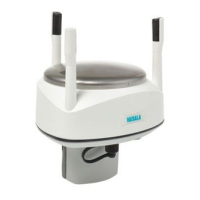
